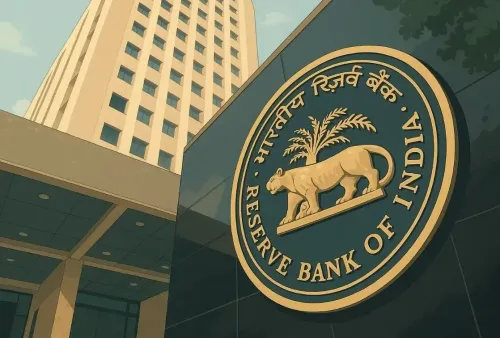What Caused the Sensex to Rise 136 Points, Nifty to Surpass 25,100?

Synopsis
Key Takeaways
- Sensex gained 136 points closing at 81,926.
- Nifty ended at 25,108.3, above the key 25,000 mark.
- Strong buying in sectors like banking and real estate.
- Midcap and smallcap indices also showed strength.
- Investors remain cautious ahead of earnings reports.
Mumbai, Oct 7 (NationPress) The Indian stock markets continued their upward trajectory for the fourth consecutive session on Tuesday, buoyed by strong buying activity in major heavyweights like ICICI Bank, HDFC Bank, and Bharti Airtel.
The Sensex climbed by 136 points, equivalent to 0.17 percent, closing at 81,926, while the Nifty finished 30.65 points, or 0.12 percent, higher at 25,108.3.
“The Nifty remains in a positive trend, firmly above the significant 25,000 level. The overall sentiment is favorable, with investors showing consistent buying interest on market dips,” experts noted.
“The immediate resistance is between 25,100 and 25,220—a breakout and sustained movement above this range could initiate the next phase of gains,” they added.
“On the other hand, if this level is not breached, it may lead to a slight pullback towards 25,000, which is likely to attract renewed buying instead of selling pressure,” analysts suggested.
In broader market trends, both midcap and smallcap indices displayed ongoing strength.
The Nifty Midcap 100 index increased by 0.47 percent, while the Nifty Smallcap 100 index rose by 0.31 percent, indicating positive investor sentiment beyond blue-chip stocks.
Real estate stocks led the charge, with the Nifty Realty index surging by 1.09 percent.
Significant buying was also noted in sectors such as oil and gas, pharmaceuticals, consumer durables, healthcare, banking, automotive, and energy.
Conversely, there was noticeable selling pressure in FMCG, PSU Bank, media, metal, and IT stocks, which closed the session in the negative.
Analysts emphasized that continued buying in index heavyweights and an improving market sentiment continue to fuel the current uptrend, even as investors exercise caution ahead of upcoming corporate earnings and global market indicators.
“After three consecutive bullish closes, the Nifty faced selling pressure near its resistance zone of 25,200–25,250 during Tuesday’s trading, suggesting that bulls might take a break, leading to potential short-term consolidation,” analysts remarked.
“However, as long as the index stays above 24,900, where its 50-day EMA is located, the outlook remains optimistic,” they concluded.









